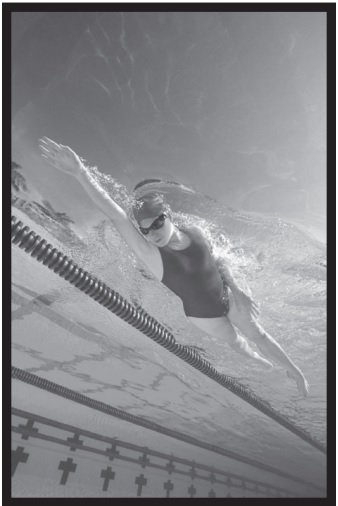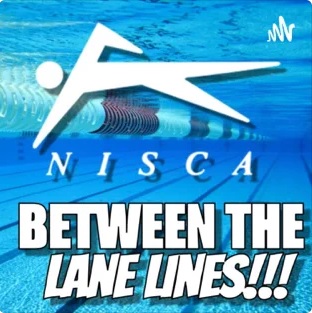This article originated as a discussion thread on the Total Immersion Forum (www.totalimmersion. net/forums). Many who frequent this forum are interested in swimming longer distances to race in open water or triathlons. Thus the distance and pace examples given are typical for an adult swimmer or triathlete. But the insights and ideas for how to think about and improve speed can be applied in any stroke or distance, and by any age or ability of swimmer.
JP asked: “I know that when I want to go faster, I have to increase my stroke rate and that this also increases my stroke count from where it is when I'm in “cruise” mode. In cruise, I have very good feel for the water in my catch; my hands don't slip and there are few bubbles and little turbulence. But when I increase the stroke rate, I feel as if I don’t have enough time between catch and recovery. If I speed up my catch I feel my hands "slipping" and I make a lot of bubbles. To avoid that I need to speed up later in the stroke, in which case I feel I’m by lifting my hand out early. Neither seems right, but I can't seem to fi nd the solution.” I replied: JP, your sense that in order to gain speed, you have increase something -- handspeed, stroke rate, number of strokes -- is what Lou Tharp (TI Coach of the West Point Triathlon Team, and author of The Overachiever's Diary) refers to as "Chasing After Speed."
The great advantages of Letting Speed Come To You are: (1) It's far more likely to produce the outcome you're seeking; and (2) When you chase after speed, the outcome is "Trying-Harder-Speed." When you let it come to you, the outcome is "Easy Speed" or as I sometimes call it "Voodoo Speed." Start by letting go of the commonly held concept that speed is represented by how fast some body part is moving at a particular moment, in favor of understanding that speed is a measure of the time it takes for your body to cover a certain distance. Many more factors go into that than, for instance, hand-speed. And for nearly all non-elite swimmers, a focus on hand-speed will nearly always result in working a LOT harder to go a little faster. Here are three principles for learning Easy Speed:
1) In any swim lasting over a minute, speed is far more about sustainability than velocity. In fact,if you replace the word “speed” with the phrase “pace-holding-ability” for any event above 50 meters, your thoughts and actions will immediately become more effective. To do this, you fi rst reduce the effort it takes to swim your current speed, so you can maintain that pace longer without fatigue. Later focus on increasing your current speed. Example: I coached the West Point sprinters from 1996 to 1999. Knowing that in 100-yard races, virtually all swimmers are decelerating over the fi nal 25, we put our team focus on learning ways to avoid or delay slowing down on the last lap, rather than on increasing max speed. During those three seasons West Point sprinters went from underperforming as a group to dominating sprint events in the Patriot League.
2) In order to move your body forward, the propulsive force you generate must be greater than the resistive force (drag) of the water. To move forward faster, you must increase the difference between propulsive and resistive forces. Increasing propulsive force takes work. Decreasing resistive force does not. This makes the resulting increase in speed sustainable – I.E. you’ll be able to hold a stronger pace longer without fatigue. Therefore always focus on reducing drag fi rst. Learning drag avoidance was the most valuable way we reduced energy waste allowing our swimmers to maintain pace on the fi nal length.
3) The only absolute about swimming speed is its "math." A particular combination of Stroke Length and Stroke Rate will always result in a particular speed. If you travel 1 meter per stroke, and complete a stroke every second, you must travel at 1 meter per second. If you’re swimming 1500 meters with this combination you’ll cover the distance in 1500 seconds or 25 minutes. If your goal is to improve your time to 24 minutes (1440 seconds), then you must change the Math of Stroke Length times Rate to create a "product" of 1440. Here are two basic examples of how the Math works
New Math A: Continue traveling 1 meter on each stroke, then you must complete each stroke in .96 seconds. 1500 strokes x .96 seconds = 1440 seconds = 24 minutes.
New Math B: Increase the distance you travel in each stroke, while keeping stroke frequency the same. (I.E. Your body travels farther in the same time.) An improvement of 4 millimeters in Stroke Length (from 1 meter to 1.04 meters) will allow you to cover 1500 meters in 1440 strokes. (I.E. It will require 60 fewer 1-second intervals to swim the distance.) 1440 strokes x 1 second = 1440 seconds = 24 minutes
In practice, most speed gains come from relatively small improvements in both SL and SR. And as you plan your practice to change the Math of your swimming, always look for the most sustainable way to create it. Increasing Stroke Length – if you do it by reducing resistance – will take less energy than increasing Stroke Rate. At West Point, we established target stroke counts for each swimmer (based on height, body type and skill) for various 100 repeat speeds, lower counts for easier repeats, higher counts for top speed dive-start repeats. But if we established that a top-speed stroke count for a particular swimmer on a top-speed dive-start repeat was 52, they could only add speed when they’d learned to do so at that count.
To recap, you have three steps for learning Easy Speed:
1) Find an easier way to swim your current speed, before increasing your max.
2) Establish or improve Stroke Length fi rst; add Stroke Rate later.
3) Improve Stroke Length by reducing resistance fi rst; improve propulsion later.
Learn more about "Easy Speed" in Chapters 8 to 12 of my just-released e-book,Outside the Box, a TI Program for Success in Open Water. Download a free excerpt at http://www.totalimmersion.net/free-stuff


